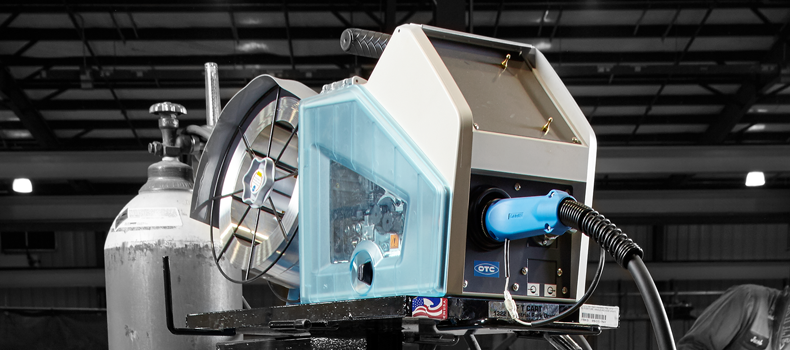
When you're involved in assembly line management, there are a wide range of inputs and processes that can affect your overhead and, by extension, your profitability. When your assembly line slows down, it costs labor and production. Processes that keep your line running efficiently directly impact your profitability. One area where many companies find room for improvement is in their welding processes. Fine tuning the process to reduce slag and spatter, improve welding times and provide better quality control results can come from a range of changes. One area where improvement can be found is in choosing to use a dual wire feeder or a single wire feeder. Here's a quick overview of each welding wire feed and the advantages and disadvantages of each.
The Advantages of a Single Wire Feeder vs a Dual Wire Feeder
Single Wire Feeder
This type of welding wire feeder is capable of only feeding a single wire, making it simpler and often less expensive than dual wire feeders. When your welding machines use a single diameter of welding wire, this is a good option to consider. If you need to use multiple welding wire diameters, the change-over time involved and risk of losing wire drive parts can cause significant delays in your production, costing additional labor while lowering productivity. Similar delays can take place when a machine needs to weld in both horizontal and other positions. Generally speaking, single wire feeders tend to be somewhat smaller and lighter than dual wire feeders, making them ideal if space is at a premium or wire feeder lifting is required.
Dual Wire Feeder
Just as it sounds, a dual wire feeder gives you the opportunity to use two different wire diameters and/or types at a time without having to change out the wire spools and probably wire drive related parts. This allows the welding machine to switch quickly between wire sizes or types. Many metal fabrication shops use this type of feeder as they can perform most tasks when equipped with one wire size on side A, for instance, and another size or type on side B. This type of feeder often eliminates or greatly reduces the change-over time on your assembly line and drastically improves your line productivity.
When you stop to take your welding wire feeder properties into account, you can discover great options for improving your assembly line efficiency. If you're not sure which type of welding wire feed will work best for your company's needs, our technical specialists are ready to help you through the process and are just a click away. OTC Daihen has committed nearly a century to innovation in welding technology and providing our clients with the best possible service for their company's needs.



